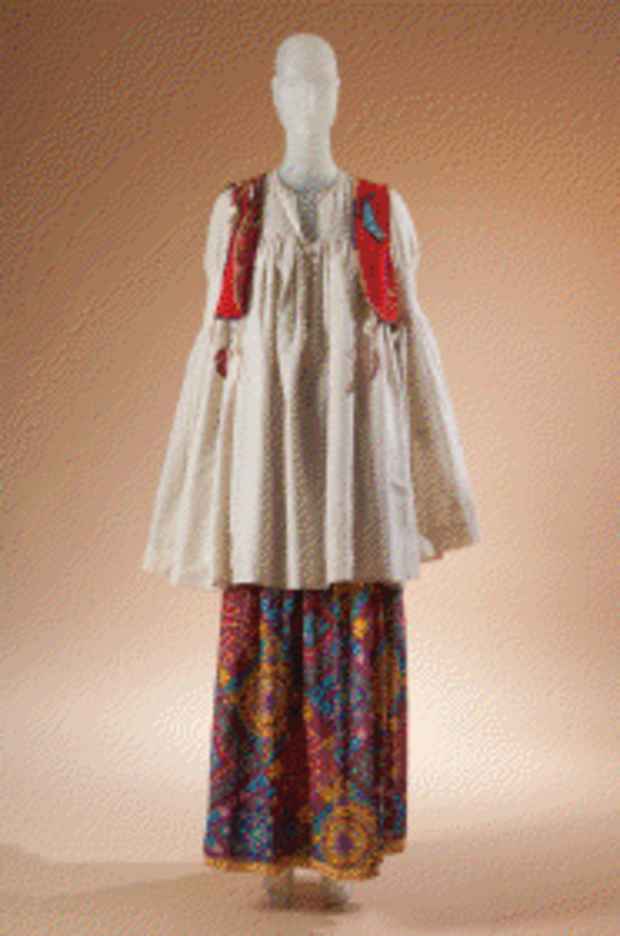"Youthquake! The 1960s Fashion Revolution" Exhibition
The Museum at FIT

This event has ended.
The Museum at FIT and the Fashion Institute of Technology’s Master of Arts program in Fashion and Textile Studies: History, Theory, Museum Practice present Youthquake! The 1960s Fashion Revolution. Featuring over 30 garments, accessories, videos, and other related media, the exhibition will explore the dramatic impact of youth culture on fashion during the 1960s, a decade defined by the ascendance of young people – who were warning each other not to trust anyone over 30 – as a political, social, and aesthetic force.
At the Fashion Institute of Technology (FIT), candidates for the Master of Arts in Fashion and Textile Studies present an annual exhibition at The Museum at FIT as part of their curriculum. They serve as conservators, curators, educators, exhibition designers, publicists, registrars, and researchers, drawing primarily from the museum’s collection to create the exhibition.
Youthquake! The 1960s Fashion Revolution will feature clothing and accessories from cutting-edge boutique and mass-market labels, as well as high fashion ready-to-wear and couture. Exhibition highlights from groundbreaking boutiques will include a metallic copper mini-dress s designed for New York’s trendsetting Paraphernalia boutique and a Day-Glo man’s shirt by pioneering British designer and boutique-owner John Stephen.
The term “youthquake” was most famously used by American Vogue editor Diana Vreeland. However, the epicenter of youth-generated style during the 1960s was London, where young shoppers began flocking to the new fashion boutiques that energetic, equally young designers seemed to be opening almost daily. A powerful consumer class was starting to take shape, and similar boutiques began opening internationally. Some of the designers whose garments were sold in these shops began developing lower-priced specialty lines in order to reach a broader audience.
Regardless of which youth group was redefining fashion at the moment – the early 1960s Mods or the Hippies later in the decade – their styles were quickly appropriated by mass marketers and couturiers alike. Mass producers made affordable versions of the new designs and hired young celebrities to sell them. To illustrate this, a pair of Trimfit tights “inspired by” fashion icon Twiggy will be displayed. The influence of music on 1960s fashion will be represented by a pair of Wing Dings shoes featuring a Beatles motif and a paper dress stamped with Bob Dylan’s image, which also exemplifies the literal disposability of the era’s fashions.
The exuberance of youthquake fashions also found expression in the work of forward-thinking couturiers. Designers such as Yves Saint Laurent began producing ready-to-wear lines that helped to ensure their fiscal survival. An example of Saint Laurent’s iconic 1968 Safari tunic from his Rive Gauche boutique will be shown. A man’s bespoke suit by Ruben Torres, which features a Nehru collar and a bold animal print, will attest to youthquake’s infiltration of made-to-order clothing.
As the decade drew to its conclusion, the Mod style ceded to that of the Hippies, who, in accordance with their anti-consumerist beliefs, championed shopping at thrift stores. Nonetheless, as evidenced by a 1968 suede vest and printed cotton maxi-skirt ensemble by New York-based designer Giorgio di Sant’Angelo, Hippie style was quickly commodified, marketed, and sold at various price points.
Youthquake! The 1960s Fashion Revolution will be on view from March 6 through April 7, 2012. Co-curators Tracy Jenkins and Cassidy Zachary will give public tours of the exhibition on March 14 and March 19, as part of the museum’s Fashion Culture series. A website created in conjunction with the exhibition will include educational resources and further information about fashion in the 1960s.
Media
Schedule
from March 06, 2012 to April 07, 2012